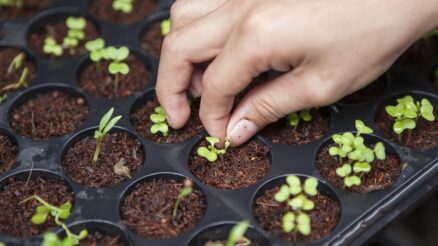Cannabis! The “green gold” that has been woven into the fabric of the U.S for centuries. From its humble beginnings as a cash crop to its meteoric rise as a symbol of counterculture and wellness, cannabis cultivation in the United States has been a rollercoaster of intrigue, debate, and innovation.
The Roots of Cannabis in the United States
The cannabis plant, with its iconic leaves and the psychoactive compound in marijuana known as THC, has been cultivated globally for ages. In the U.S, early settlers quickly recognized the multifaceted value of the cannabis plant. Beyond its psychoactive properties, it served as a resource for ropes, textiles, and even medicines.
Which States Allow Marijuana Cultivation?
Across the United States, the green wave of cannabis cultivation is gaining momentum. As of 2023, the number of states that have approved marijuana cultivation is steadily increasing. Pioneers like California and Colorado have set the stage, fully embracing both recreational and medical use of cannabis. These states serve as a beacon for cannabis cultivators, showcasing the potential of the industry. However, not all states are on the same page. While many are opening their doors to both recreational and medicinal use of marijuana, others are more reserved, allowing only medical growing. This cautious approach often stems from a desire to monitor the medical use of cannabis more closely before expanding to broader legalization. Nonetheless, the shifting national sentiment is clear: cannabis cultivation in the United States is on the rise, and more states are recognizing its multifaceted benefits.
Medical Use vs. Recreational: What’s the Difference?
In the diverse landscape of cannabis cultivation in the United States, understanding the distinction between medical and recreational use of marijuana is crucial. Medical cannabis, tailored for therapeutic purposes, often boasts a higher CBD content and a reduced THC level. This composition caters to patients seeking the medicinal benefits of cannabis without the pronounced psychoactive effects. On the flip side, recreational cannabis is all about the buzz. Cultivators aim to amplify the THC content, the psychoactive compound in marijuana, to ensure users experience the euphoric high they desire.
The Rise of Domestic Cannabis: Why Grow at Home?
With the ever-expanding legalization landscape, there’s been a surge in domestic cannabis cultivation. Many growers opt to cultivate their marijuana plants indoors, ensuring optimal conditions and potency. For these dedicated cultivators, it’s not just about growing weed; it’s about nurturing a passion and ensuring the highest quality product.
How to Obtain Cultivation Licenses?
For those looking to elevate their cannabis cultivation journey beyond personal use, navigating the path to a cultivation license becomes paramount. The Department of Cannabis Control, a pivotal entity in many states, is the gatekeeper of this process. But obtaining a license isn’t a mere formality. It’s a rigorous journey that delves into the applicant’s background, ensuring they have no skeletons that might compromise the integrity of the industry. Adherence to both state and local cannabis laws is non-negotiable, and potential cultivators must demonstrate a thorough understanding of these regulations. Moreover, a commitment to uphold the gold standards of cannabis cultivation is essential. This means ensuring that the cannabis growing environment, whether indoor cannabis or outdoor cannabis, meets the stipulated guidelines and that the end product is of the highest quality.
Growing Marijuana: Best Practices and Tips
Embarking on the journey of cannabis cultivation in the United States is akin to diving into a rich tapestry of knowledge, tradition, and innovation. Every seasoned grower will attest that growing marijuana is both an art and a science. It starts with selecting the right strain, understanding its genetics, and predicting how it will interact with the growing environment. Knowledge of the cannabis plant’s life cycle is fundamental, from the early stages of planting to the final harvest. But it’s not just about following a set formula. Each marijuana plant is a unique entity, with its own set of needs and quirks. It demands individual care, attention, and sometimes, a little intuition. Whether you’re growing for medicinal use or recreational purposes, the goal remains the same: to nurture the plant in a way that it reaches its full potential, offering the best yield and quality. And in this endeavor, patience, dedication, and continuous learning are a grower’s best allies.
Medical or Recreational: Which States Allow Home Cultivation?
Navigating the patchwork of cannabis laws across the United States can be a daunting task for potential growers. The privilege to cultivate cannabis plants at home varies widely. Progressive states like California have set the tone, allowing residents the freedom to grow cannabis for both medical and recreational use. However, not all states share this liberal stance. Some have stringent regulations, often limiting home cultivation to medical marijuana patients only. As of 2023, the number of states that allow home cultivation for either purpose has been on the rise. For those with green thumbs and aspirations to grow, it’s essential to dive deep into state laws, understanding the nuances of home growing of cannabis in their respective regions.
The Economic Impact of Marijuana Cultivation in the USA
Beyond the leafy greens and aromatic buds, cannabis cultivation is fueling a transformative economic movement in the U.S. As more states give the nod to legalize cannabis, the economic implications are profound. The industry is not just sprouting; it’s thriving, creating jobs, stimulating ancillary businesses, and pouring tax revenue into state coffers. From small-scale growers to large marijuana farms, the cultivation landscape is playing a pivotal role in reshaping the American economic narrative.
Recreational and Medical: The Dual Faces of Cannabis
Cannabis is a plant of many faces. For some, it’s a recreational escape, while for others, it’s a medical lifeline. This duality, serving both recreational and medical needs, underscores the significance of its cultivation.
Challenges in Cannabis Cultivation: What Growers Need to Know?
Embarking on the journey of cannabis cultivation is not a walk in the park. Growers, whether seasoned or novices, face a myriad of challenges. From the natural adversaries like pests and diseases to the man-made hurdles like ever-evolving cannabis laws and regulations, the path is strewn with obstacles. Add to that the challenges of ensuring optimal growing conditions, be it in an indoor cannabis setup or an outdoor farm. And let’s not forget the local laws that can sometimes throw a curveball. In this intricate dance of nature, law, and commerce, growers must remain agile, informed, and always ready to adapt.
The Future of Cannabis in the United States
As we journey through 2023, the horizon for cannabis cultivation in the USA is gleaming with promise. With the amalgamation of advanced cultivation techniques, a shifting societal acceptance, and a market that’s expanding at an unprecedented rate, cannabis is not just a fleeting trend. It’s cementing its place as an integral chapter in the American story, with states like California and Colorado leading the narrative.
In Conclusion
The tale of cannabis cultivation in the United States is one of evolution, fervor, and flourishing potential. As the nation reexamines and redefines its bond with this age-old botanical, the future of cultivation transcends mere growth—it’s about forging a pathway toward prosperity, embracing holistic wellness, and ushering in an innovative epoch. For cultivators and connoisseurs eager to be part of this transformation, the chance to explore a cannabis seed bank in the USA offers a portal to quality, consistency, and the assurance of thriving gardens. It is a vital resource for those looking to procure premium weed seeds in the USA, ensuring that each planting season can be met with anticipation for exceptional growth and innovation.





